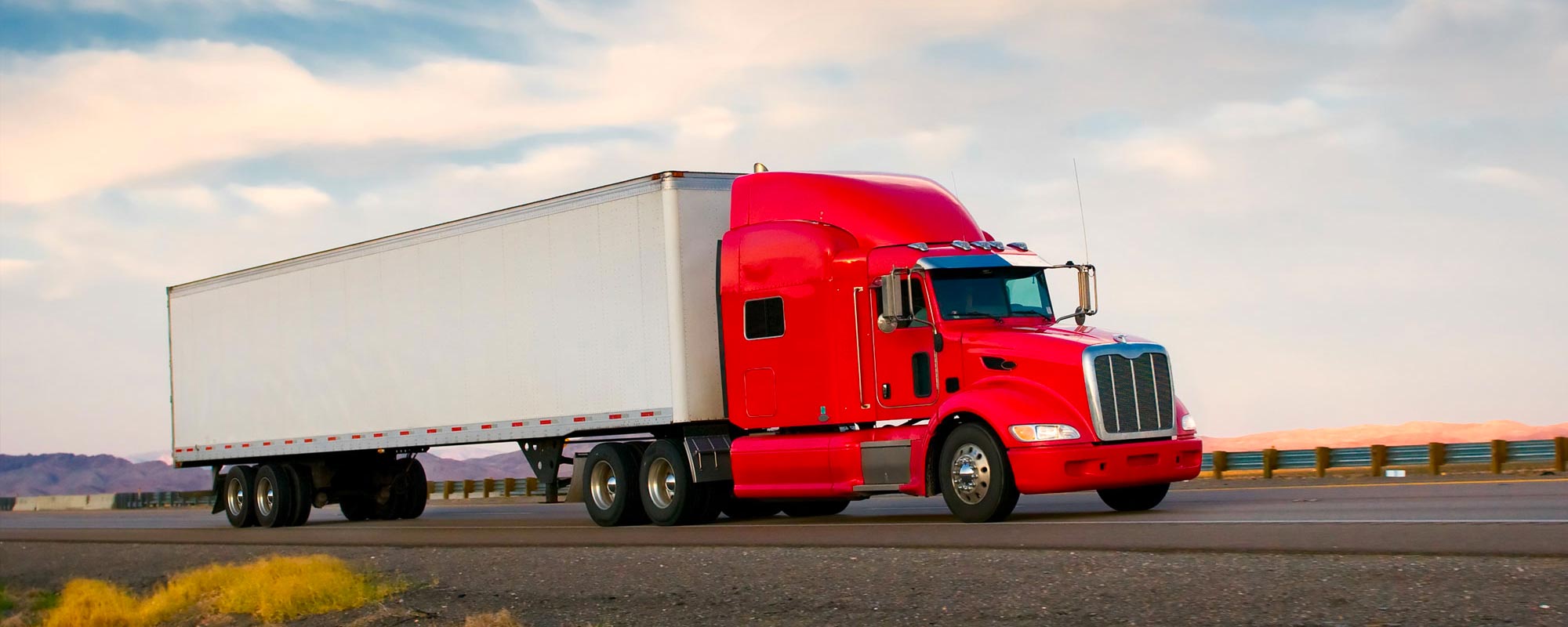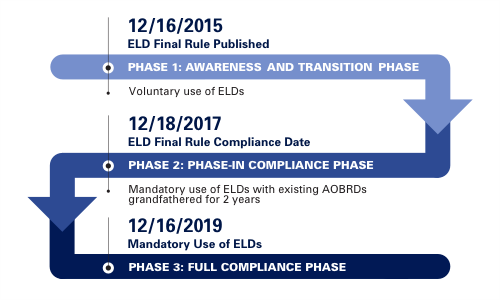The Moving Ahead for Progress in the 21st Century Act (MAP-21) goes into effect on December 18, 2017, and will change the way about 3.5 million long haul truck drivers—including drivers carrying freight to Canada and Mexico—will be subject to new electronic logging device (ELD) rules.
What is the ELD Mandate?
The ELD rule applies to most motor carriers and drivers who currently fill out records of duty status (RODS) per Part 395, 49 CFR 395.8(a). Also known as driver’s logs, they record the driver’s times for every 24-hour period and specify whether they are driving or off duty.
What is an ELD? Is it different from other devices in use?
An ELD is a tablet used to record driver hours of service (HOS) and replaces paper driver logs and other systems like an Automatic Onboard Recording Device (AOBRD). The ELD plugs directly into the engine control module of a vehicle and records the driver’s HOS compliantly. Because an ELD connects directly to the engine, driving time is automatically tracked reducing the paperwork required by the driver. Most ELDs are also equipped with an alerting system to notify drivers of potential HOS violations to ensure drivers have sufficient time to reach a safe place to park.
A smartphone or other wireless device may be used as long as the device meets the technical requirements and is certified and registered with the FMCSA.
When is the deadline to comply with the new rule?
Provided by FMCSA, the ELD rule is being implemented in three phases. The use of ELDs or AOBRDs must be operational on or before December 18, 2017. This mandate is vehicle based, not fleet based, and applies to every vehicle in use for commercial carrying as defined in the regulations.
The table illustrates the different devices that can be used during each phase:
| ELD | AOBRD | Logging Software | Paper | |
|---|---|---|---|---|
| Phase 1 | ▄ | ▄ | ▄ | ▄ |
| Phase 2 | ▄ | ▄ | ||
| Phase 3 | ▄ |
How do you know if the ELD rule applies to you?
Most interstate operations that keep an HOS log are impacted by the ELD mandate. While this rule will affect millions of commercial drivers, there are select exemptions from the mandate:
- Short-Haul Drivers: Drivers who use the 100 air-mile radius exception or 150 air-mile radius exception.
- Driveaway-Towaway Operations: If the commercial truck is being handled as part of a shipment (the truck is the product being shipped).
- Pre-2000 Vehicles: Vehicle models dated 1999 or prior based on the vehicle identification number (VIN).
Are you ready?
While this phased-in approach provides drivers, fleets, and enforcement personnel time to adjust to the requirement before enforcing out-of-service violations—vehicles not outfitted with a compliant ELD after December 18, 2017, will be cited and fined.
Fortunately, truckers won’t immediately be put out of service or told to stop driving if they don’t comply with the ELD mandate by the December deadline, according to the Commercial Vehicle Safety Alliance (CVSA). Instead, the safety alliance is allowing a grace period up to April 1, 2018, before it begins to apply the out-of-service criteria related to the pending regulation.
About Openforce
Openforce is the leader in technology-driven services that reduce operating costs and mitigate risk for companies using independent contractors. Our cloud-based applications help companies and contractors alike achieve more sustainable, profitable growth by removing financial, operational, and compliance barriers to getting business done.


